RurEx - The Ramblings of an Old Man - Episode #1 - The House in the Wilderness
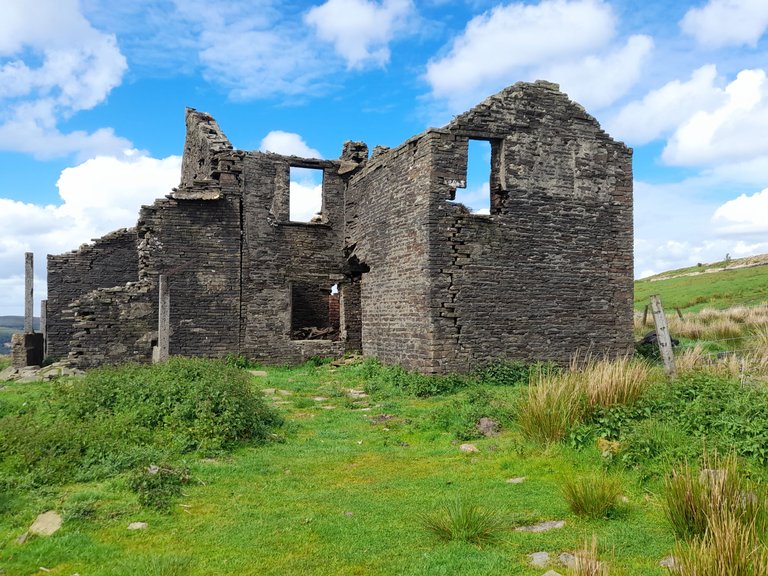
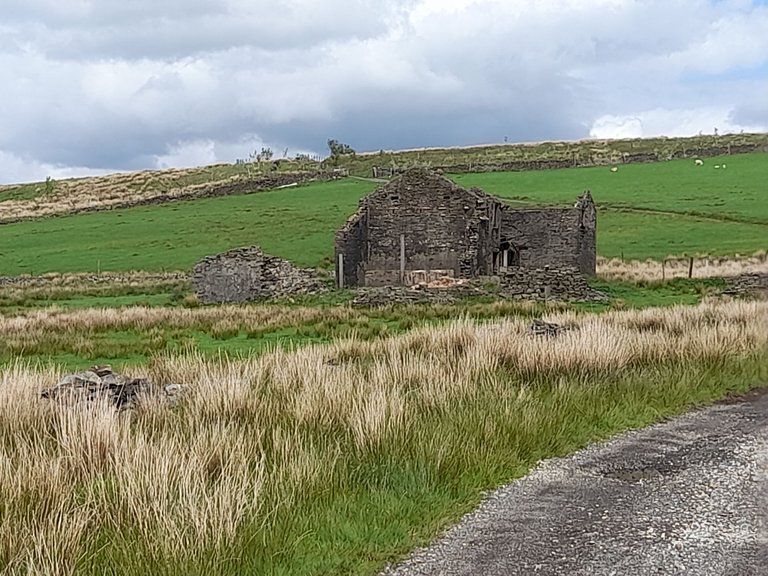
Walking down the road, on the approach to the house you can see straight away that it is abandoned. The roof is missing, with incomplete walls.
It is very secluded, no other properties can be seen in the distance.
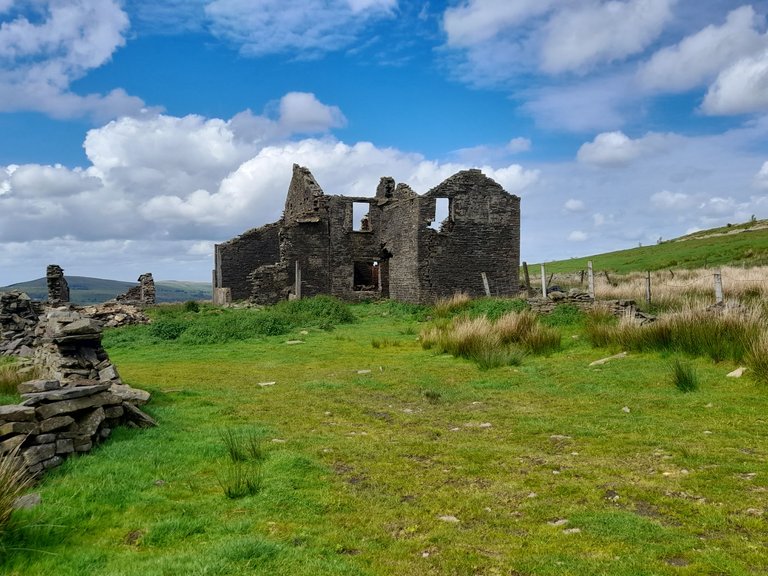
As I get to what could be loosely described as the drive. Ok it's a break in the wall, allowing access to the property, we get a better idea of how badly rundown this property is.

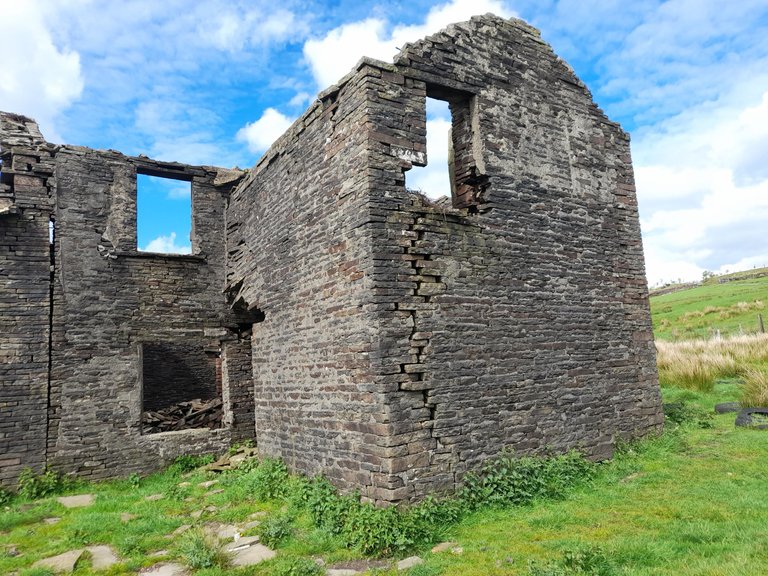
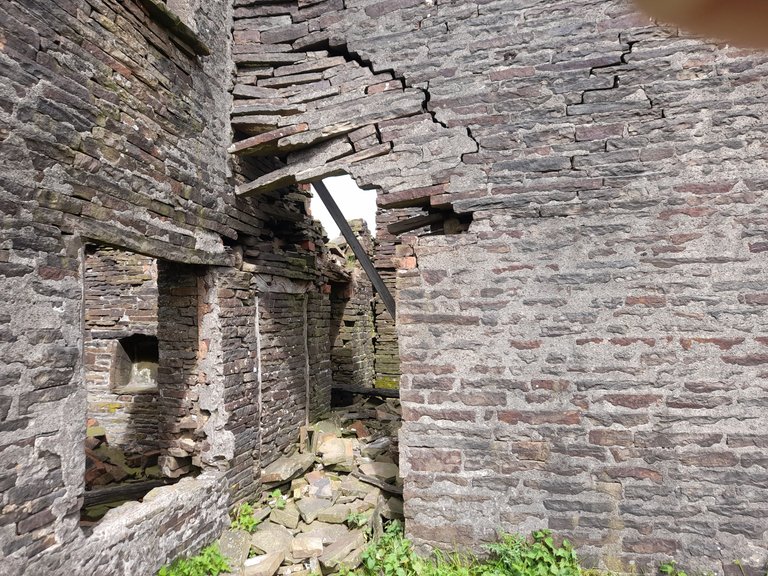
This house has seen better days, on approach I can see it has a crack running from the upstairs window to the ground with collapsing masonry over what looks to be the main entrance.
I'll have to be careful not to pass through this doorway.
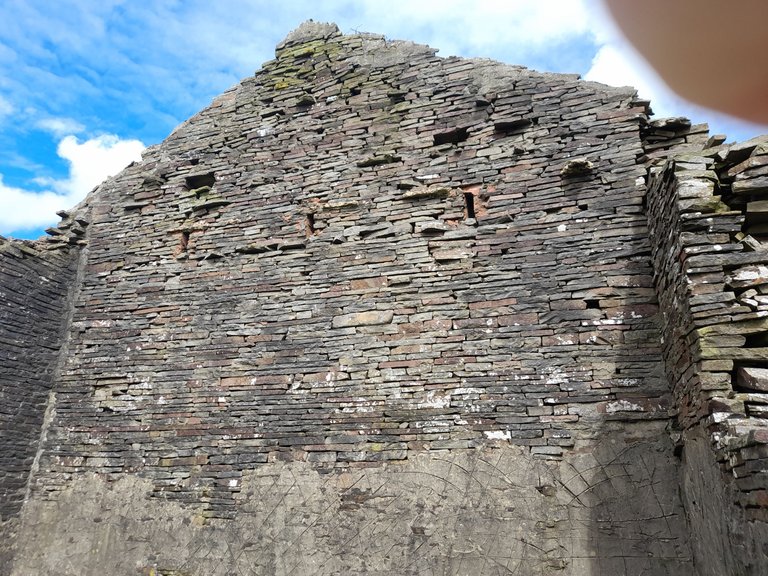
Moving around the the left of the building the structure looks more sound here, but there are no beams for the first floor and the majority of the side walls are missing.
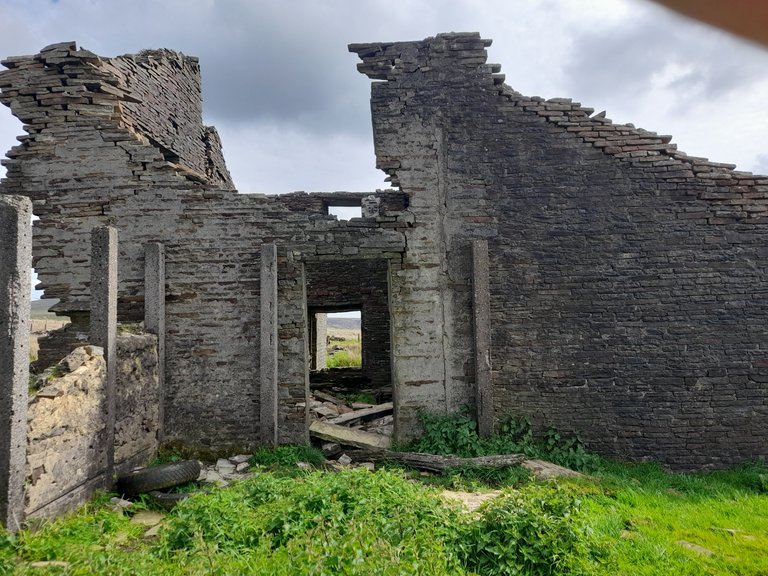
Circling round to the back of the building it looks as if the wall to the right has had some repairs as the upper layer of stone look like dry stone walling and the colour doesn't match that of the lower wall.
There is also the small issue of the missing upper floor wall in the upper centre of the picture.
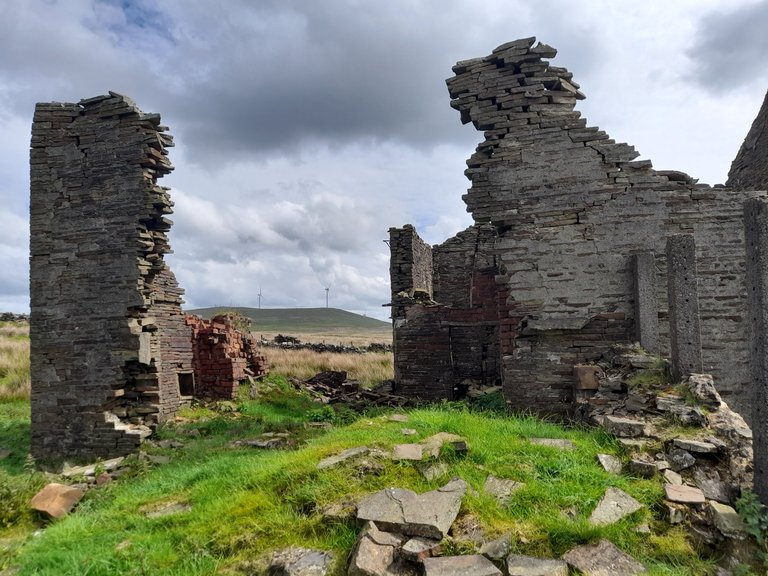
As we move around the section at the back of the house, you can see a stack of stone performing a balancing act high up to the right.
On the left we can make out the remnants of the red brick fireplace.
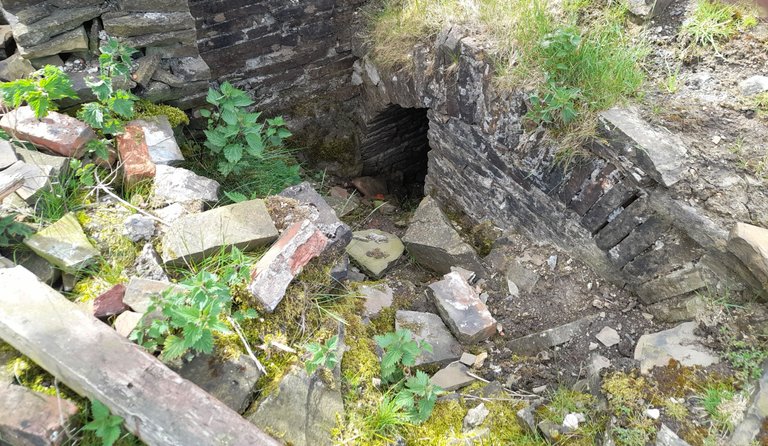
Just to the right of the previous picture we find the cellar entrance, although it is barely big enough to get through (don't worry, there is no way I'll be trying).

However, getting up close and personal with the entrance, we can see inside and the vision is of inky black darkness, it's a good job I have a flash. There is also the clear sound of running water.
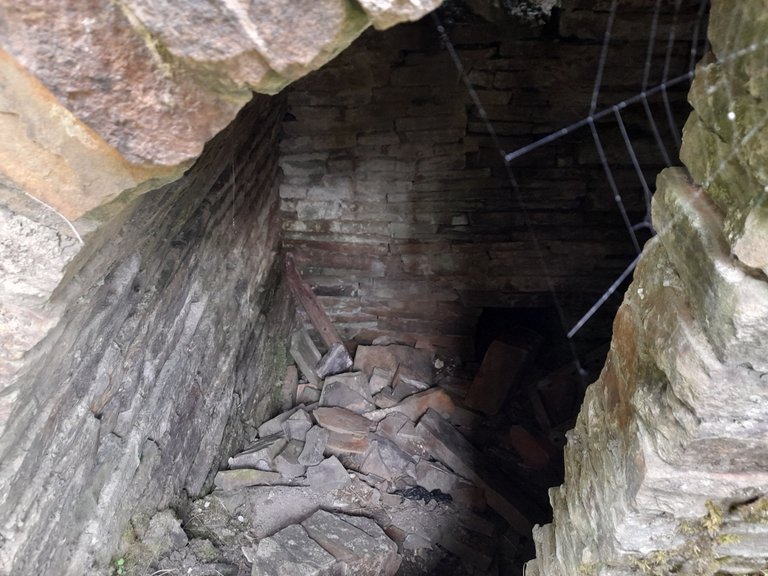
Moving slightly to my left and taking the picture again we get to see right to the back wall, and an atmospheric spiders web glints in the sunlight in the top right of the picture.
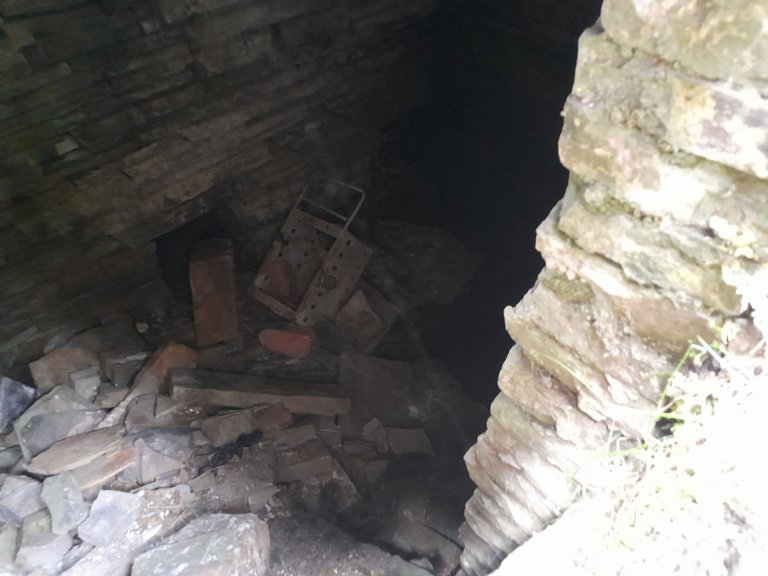
Still not content with the view, I swing to the right with the camera over to get a shot at the back corner of the cellar to open up the scene.
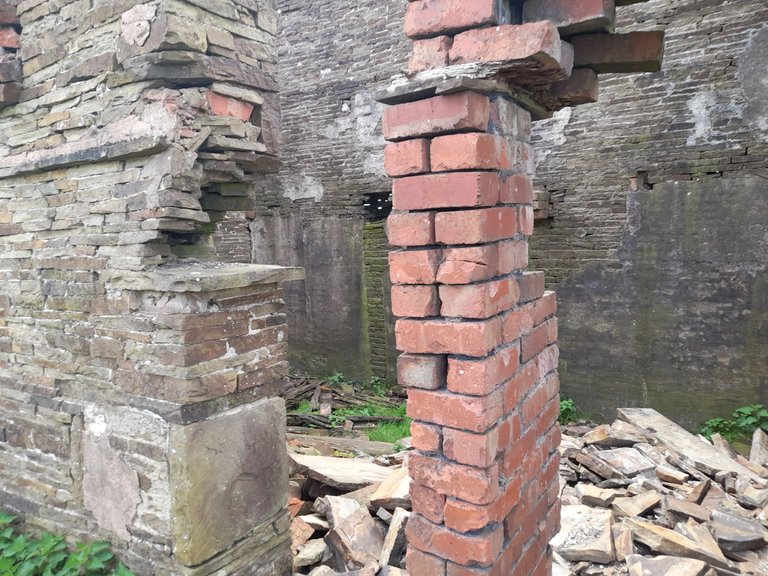
Leaving the cellar behind and moving on to the other side wall of the property, we can immediately see a rickety red brick stack that barely looks like it can support itself. There is also a rotten wood sandwich at the top of the stack.

Yet looking upwards we can see this unstable brickwork is supporting most of an upstairs wall. No way was I touching those bricks.

In this picture we can see wooden lintels over the doorways, the one to the left is bowing under the weight of the bricks and stone it is supporting.
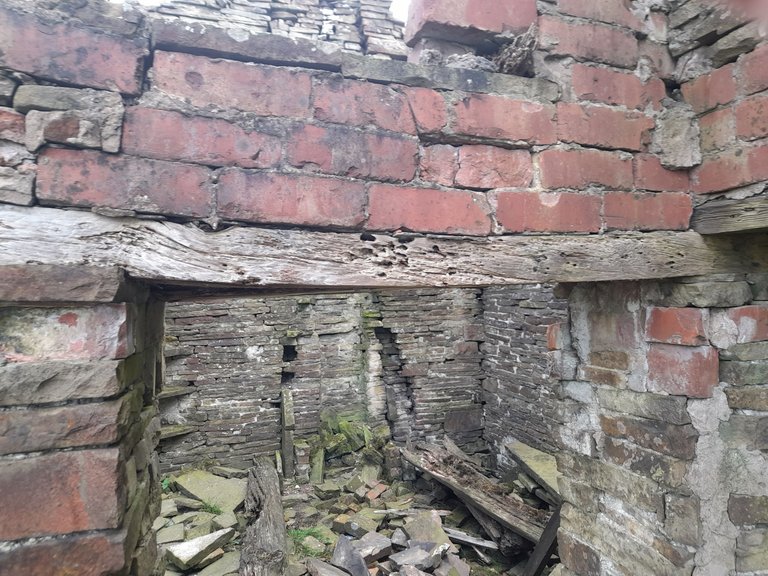
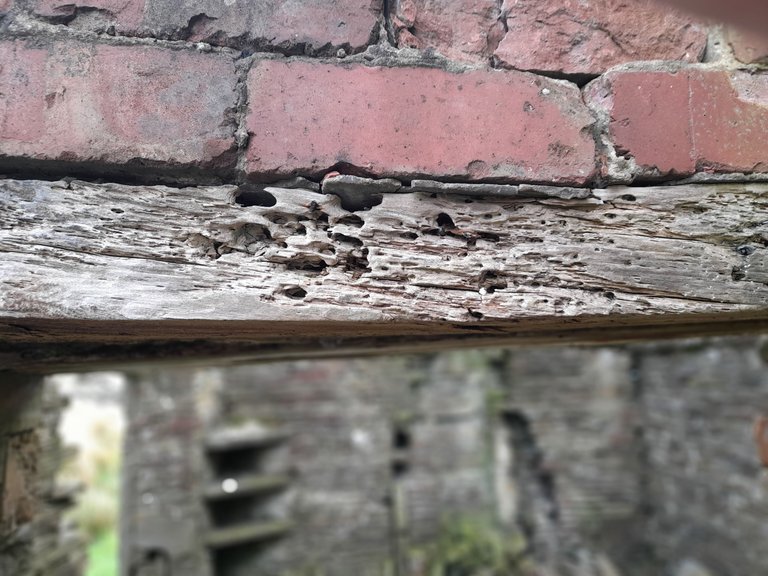
Taking a closer look at the left doorways lintel we can see advanced damage to the middle of the support.
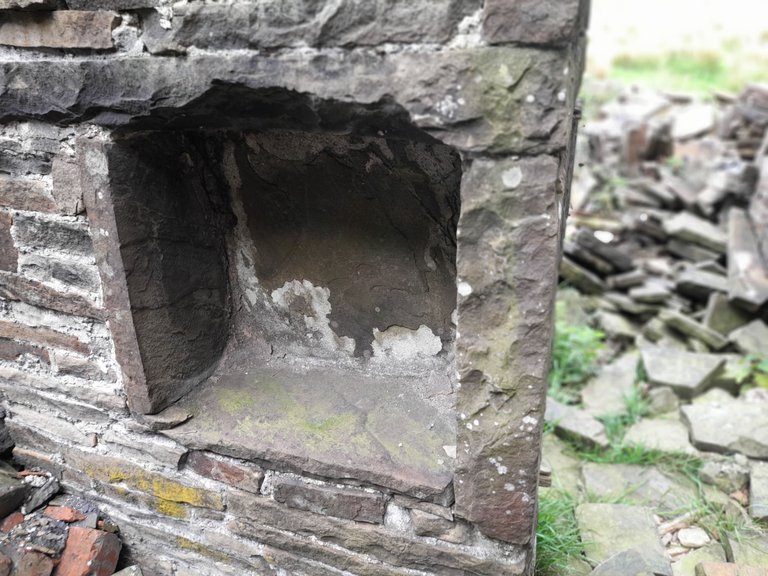
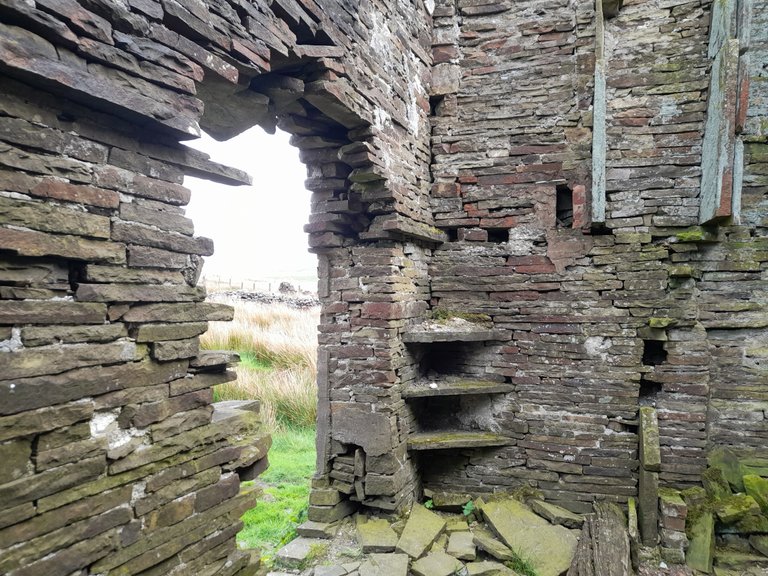
The building has some quaint little features, like this recessed feature in the wall and the stome corner shelves.
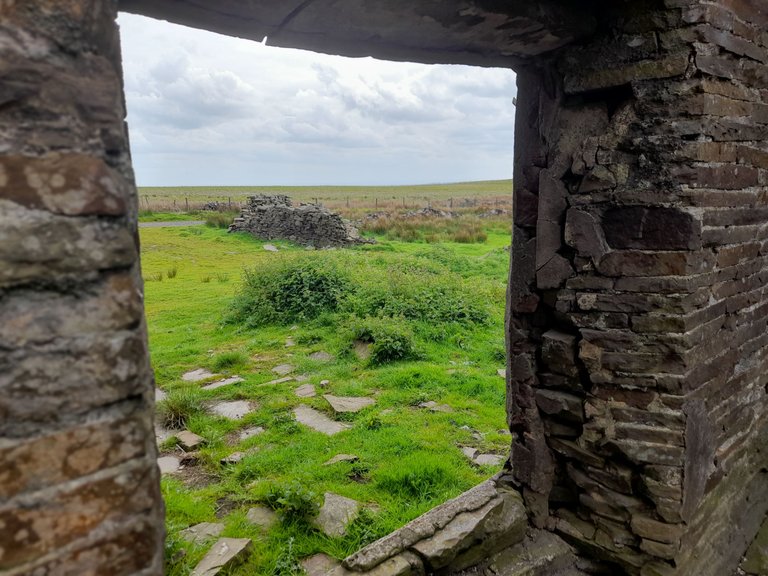

Some of the views out of the windows look bleak on a sunny day, definitely not a case of location, location, location for this property.
Imagine what it would be like to live here in the depths of winter, with the gaps in the stonework, it must have been freezing, with the only respite being the heat from the fireplace.
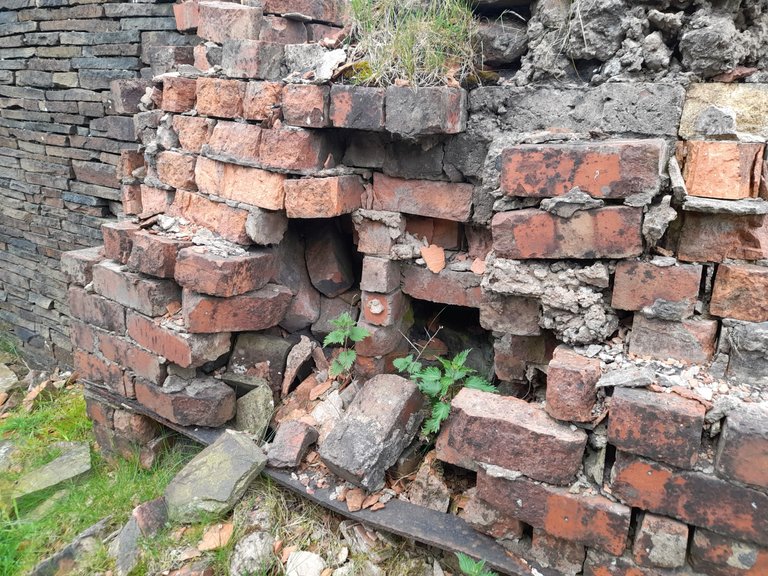
Sadly the fireplace is barely recognisable up close, with nettles nestled in the stone work, hiding a little spider.
Not really a place for arachnophobes.
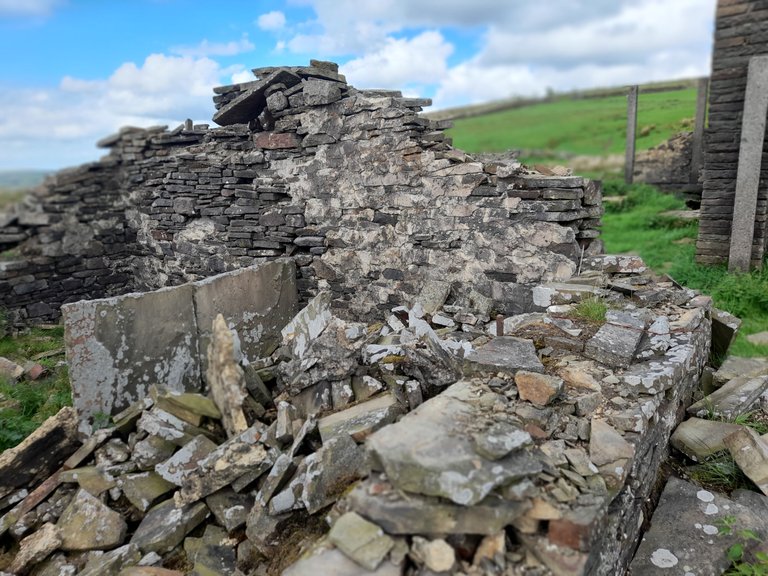
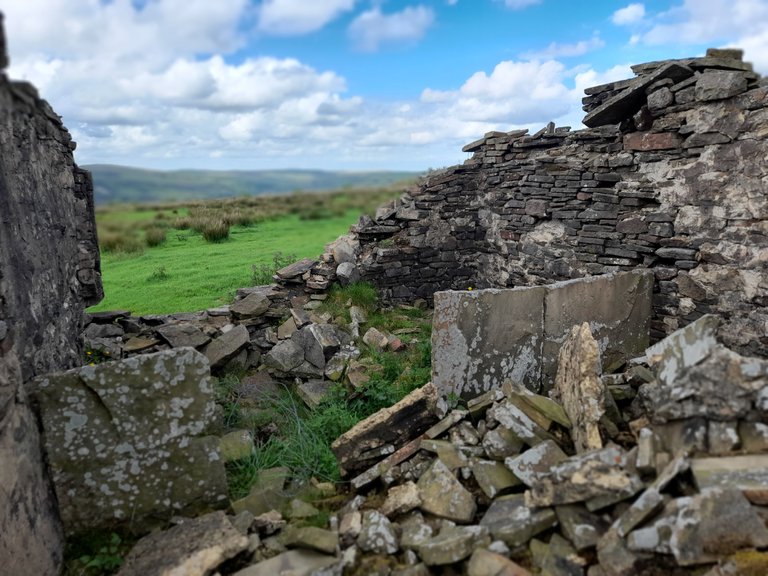
There is also an outbuilding, but it is not clear what it was used for, this is also a wreck.
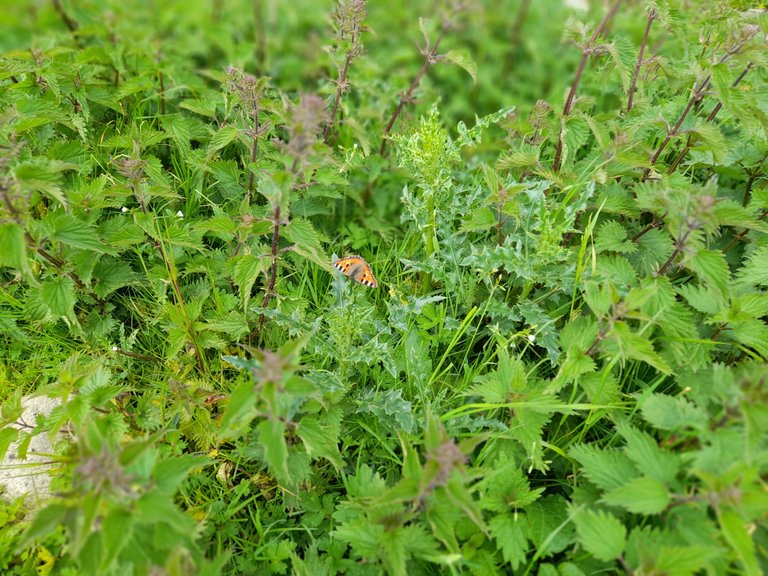
Perched in the nettles is a butterfly, this sod led me a right merry dance outside the building, it took me the best part of five minutes to get this shot. I didn't even get chance to use zoom.
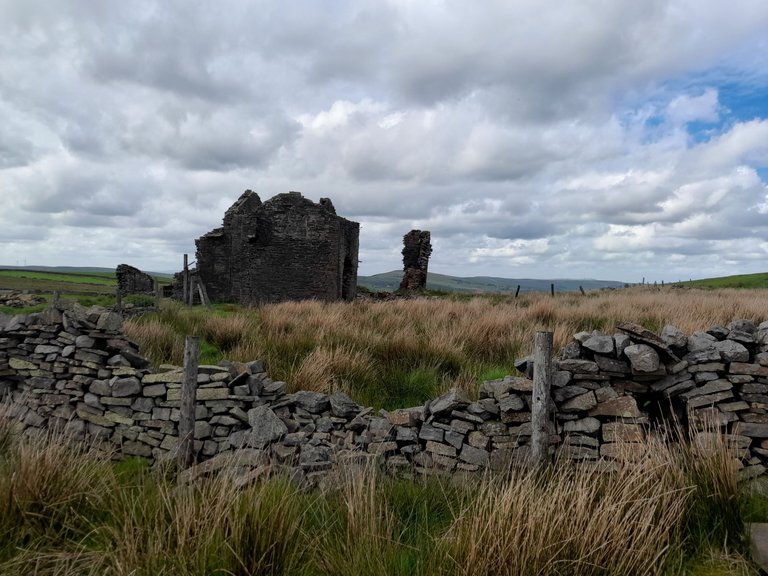
As we leave the property, I turn and take a final photo. From here it looks like the lonely right hand wall has a little bit of a lean to it and we can see the fluffy white clouds with a hint of grey at the bottom, a warning of the rainfall that is to come.
Well, us brits love to talk about the weather.
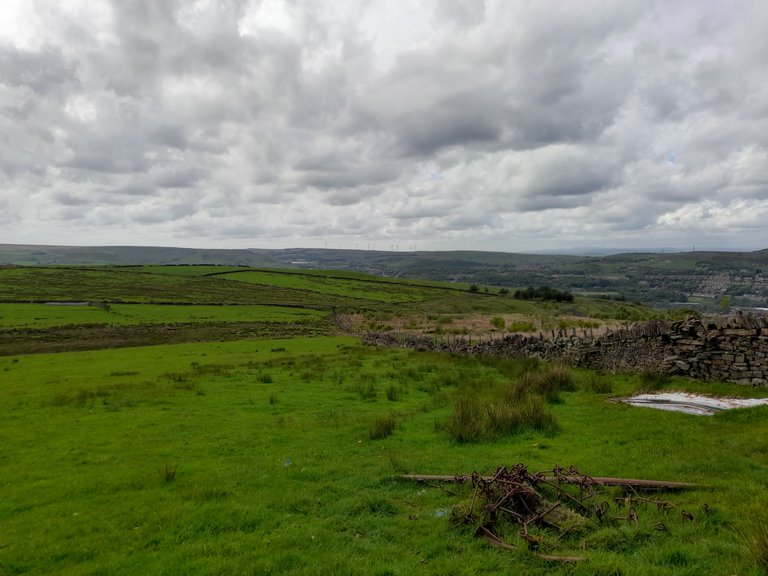
England, a green and pleasant land ...
If you should find this place (I am deliberately refraining from posting the location) please view it as safely as you can, just leaning on a wall could end in serious injury.
All photos were taken by myself.
Congratulations @owdgibber! You have completed the following achievement on the Hive blockchain and have been rewarded with new badge(s):
Your next target is to reach 50 upvotes.
You can view your badges on your board and compare yourself to others in the Ranking
If you no longer want to receive notifications, reply to this comment with the word
STOPSupport the HiveBuzz project. Vote for our proposal!
Hello, @owdgibber! This is @anggreklestari from @OCD team. We saw that you already posted your first post here in Hive Blockchain! Congratulations and welcome! However, it would be awesome if you do an introduction post. As a sample of what an intro post is, you can refer to this intro post for reference:
Keeping Up With the Buzz - My Introduction to the Hive Community
There's no specific format on how you do your intro post, but there is some suggested content that we would love to see in your post. Information like who are you and where you're from, how did you discover Hive or who invited you, what types of content you want to see here and the types that you want to produce, and what are your expectations in this platform. There's no pressure on this. You can choose whatever information you would like to share.
You can tag me @anggreklestari on your intro post then if you have done with it.
Well, you can explore the communities that are suitable for your content. You can read some of the communities in this post: OCD Communities Incubation Program
For tips and information as a Hive newbie, click here: newbie guide.
The important thing is Hive is a bit different from other social media platforms since you are monetizing your blog. You can't include content that you don't own without sources. For more information, check this post: Why and How People Abuse and Plagiarise.
If you have questions, you can hop into OCD's Discord server and we'll gladly answer your questions. For now, @lovesniper will follow you and we are looking forward to your intro post!
What a beautiful place and old house! I like it, thank you sharing
It was a totally unexpected find and the area is very scenic, I also had the weather on my side.
Thank you for having a read :)
I love seeing these old ruins, though it somehow stabs my soul. I can imagine what a home such as this looked like in it's useful days, in all it's glory and strength. With the current turmoil going on in the world, the security of those thick walls would bring much comfort, in spite of the cold and drafty winters.
Well, off I go to daydream :-)
Hello Tamara,
This was most likely a shepherds house, as the fields surrounding it are not suitable for crops, more for grazing. I would say it's too high up for cattle, so only sheep would graze here or maybe goats.
The stone left lying around is most likely worth a bob or two if anyone could be bothered going getting it.
It is a shame it has ended up like this, but the towns in this area have regenerated a lot in recent years, so there is a glimmer of hope for this building.
Aha! Maybe that's why I feel drawn to it. I am a spinner and weaver of wool so maybe I am smelling the lanolin LOL
I certainly hope someone takes an interest. I truly enjoyed the tour!
Hi @owdgibber , if I could get over there, I would try to save and rehab this structure.
It would most likely cost more than I have access to, but I just LOVE this sort of thing.
I think of myself as an "archaeological sleuth", in that even at my current (and probably last) home, (an 80 yr old farm house) I am constantly finding things, remains of old structures etc, that I feel COMPELLED to try and figure out what they were used for.
It is one of my passions.
I love your post.
↑Upvoted↑and←Reblogged→ and Followed→
Hello Jerry,
The terraced house I live in was built in 1889, these old buildings were built to last using sandstone and Natural Hydraulic Lime (NHL) mortars.
As water evaporates off the surface of the set mortar the suction pulls more moisture to the exposed surface to evaporate, this suction helps to keep the sand stone dry and protect it.
Sadly nearly all the houses nearby have been pointed with non porous Portland Cement, this causes the moisture to be locked in to the sand stone longer causing surface fracturing and the stone surface turns to sand. This is caused by freeze / thawing that occurs in winter.
If the stone is painted this speeds up the process and after a few years when the paint comes away it reveals 3-5 mm of sand behind it.
I still think we could learn a thing or two from these old buildings and how they were constructed.
Thanks for reading
@tipu curate
Upvoted 👌 (Mana: 18/48) Liquid rewards.
Lovely! Great to see some rural exploration!